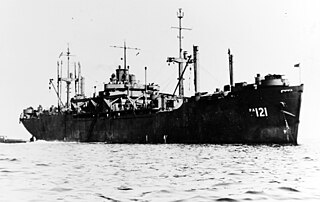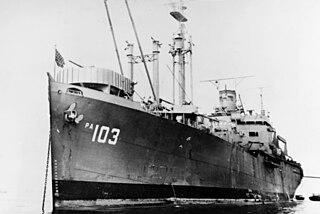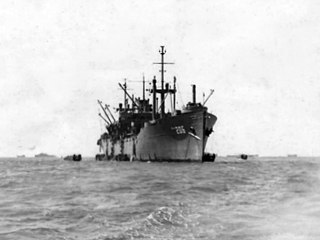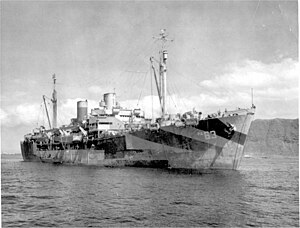
USS Talladega (APA/LPA-208) was a Haskell-class attack transport of the US Navy. She was of the VC2-S-AP5 Victory ship design type. Talladega was named for Talladega County, Alabama.

USS Attala (APA-130) was a Haskell-class attack transport in service with the United States Navy from 1944 to 1946. She was scrapped in 1974.

USS Napa (APA-157) was a Haskell-class attack transport in service with the United States Navy from 1944 to 1946. She was scrapped in 1983.

USS Arenac (APA-128) was a Haskell-class attack transport in service with the United States Navy from 1945 to 1946. She was scrapped in 1974.

USS Hocking (APA-121) was a Haskell-class attack transport in service with the United States Navy. from 1944 to 1946. She was scrapped in 1974.

USS Missoula (APA-211) was a Haskell-class attack transport in service with the United States Navy from 1944 to 1946. She was scrapped in 1975.

USS Mifflin (APA-207) was a Haskell-class attack transport in service with the United States Navy from 1944 to 1946. She was scrapped in 1975.

USS Logan (APA-196) was a Haskell-class attack transport of the United States Navy, named for counties in Colorado, Illinois, Kansas, Kentucky, Ohio, Oklahoma, Nebraska, North Dakota, and West Virginia. The Haskell-class design, United States Maritime Commission standard type VC2-S-AP5, is a sub type of the World War II Victory ship design.

USS Barrow (APA-61) was a Gilliam class attack transport serving in the United States Navy from 1944 to 1946. She was scuttled in 1948.

USS Queens (APA-103) was a Windsor-class attack transport that served with the US Navy during World War II. She was commissioned late in the war and initially assigned to transport duties; consequently she did not take part in any combat operations.

USS Rockingham (APA/LPA-229) was a Haskell-class attack transport in service with the United States Navy from 1944 to 1947. She was scrapped in 1979.

USS Lowndes (APA/LPA-154) was a Haskell-class attack transport in service with the United States Navy from 1944 to 1946. She was scrapped in 1983.

USS Newberry (APA-158) was a Haskell-class attack transport in service with the United States Navy from 1944 to 1946. She was scrapped in 1984.

USS Karnes (APA-175) was a Haskell-class attack transport acquired by the U.S. Navy during World War II for the task of transporting troops to and from combat areas.

USS Briscoe (APA-65) was a Gilliam-class attack transport that served with the United States Navy from 1944 to 1946. She was sunk as a target in 1948.

USS Carteret (APA-70) was a Gilliam-class attack transport that served with the United States Navy from 1944 to 1946. She was sunk as a target in 1948.

USS Colusa (APA-74) was a Gilliam-class attack transport that served with the United States Navy from 1944 to 1946. She was scrapped in 1966.

USS Sibley (APA-206) was a Haskell-class attack transport in service with the United States Navy from 1944 to 1946. She was scrapped in 1975.

USS Sevier (APA-233) was a Haskell-class attack transport in service with the United States Navy from 1944 to 1947. She was scrapped in 1980.

USS Bollinger (APA-234) was a Haskell-class attack transport in service with the United States Navy from 1944 to 1947. She was scrapped in 1982.




















